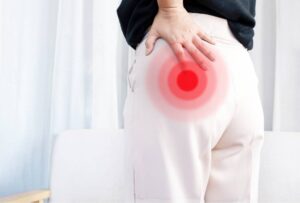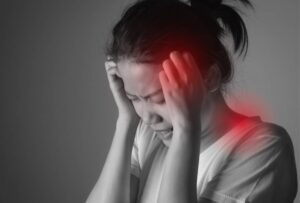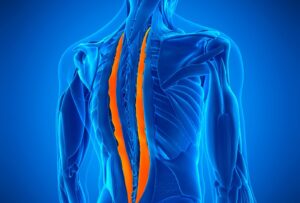Bone spurs are abnormal bone growths that can occur along the edges of a bone. In essence, they are just extra bone tissue, that are also called osteophytes. Bone spurs can form on any normal bone, but are most commonly found in joints, where two or more bones meet. They also occur where muscles, tendons and ligaments attach to the bone.
Some other places where bone spurs can occur and produce a lot of pain are the rotator cuff (where the shoulder bone meets the upper arm), as well as the heel of the foot, with the potential to irritate the ligament on the bottom of the foot, leading to plantar fasciitis.
Although bone spurs can occur in any bone in the body (such as the feet), in this piece we will concentrate on spinal bone spurs. As previously stated, because these bony growths can occur in any part of the body, this includes any part of the spine as well. Therefore, they can appear along any of the three major segments of the back: lumbar spine, thoracic spine and cervical spine.

What causes bone spurs in the spine?
Bone spurs tend to form on the spinal joints as a result of degenerative changes to the spine, such as osteoarthritis. However, other risk factors and common causes of bone spurs include:
- Degeneration of the spinal discs
- Spinal stenosis
- An injury to the soft tissue of the back, that results in damage to a joint, tendon or ligament
- Congenital defects of the spine
What are the symptoms of a bone spur in the spine? What do they feel like?
Although bone spurs can go by unnoticed for a long period of time because they don’t necessarily cause any symptoms, there are times, when they can lead to issues such as spinal compression, impinging on the nerve roots, and maybe even on the spinal cord.
If this impingement on the spinal structure occurs, it can cause symptoms such as burning back, neck or joint pain, loss of balance, spasms in the back muscles, and pain that radiates to other parts of the body, such as the shoulders.
In addition to the physical symptoms, as the spinal nerves become compressed, patients with bone spurs also tend to complain of several neurological symptoms including:
- Pain in one or both arms or legs.
- Numbness or tingling in one or both arms or legs.
- Progressive weakness in one or both arms or legs.
- In very rare cases, bowel and bladder incontinence may occur.
Bone spur diagnosis, treatment and pain relief options
If the main symptom that you suffer from is back pain, it is advised that you seek medical advice to determine the exact cause of this pain, as it is a symptom that is present within many spinal disorders.
In order to accurately pinpoint the cause of your symptoms, a medical professional (preferably a spinal specialist) will conduct a physical examination along taking your medical history to better understand your issue.
If the results from the physical examination are not conclusive, you may be asked to undergo further tests, such as an MRI scan or a CT scan.
Bone spurs will not go away on their own as they are new bone growths, but there are ways to either manage or threat them. Currently, some of the most common treatment options for bone spurs include:
- Anti-inflammatory medication to temporarily alleviate/manage the pain
- Taking a short period of rest
- Physical therapy or rehabilitation therapy
- Cortisone epidural steroid injections to relieve pain for a short period of time, although they do not do anything in terms of treating the bone spur itself
- Surgery, as a last resort for extreme cases
Alternatively, to safely and effectively manage back pain that occurs because of bone spurs from the comfort of your own home, and without experiencing any side effects (as is the case with the majority of the approaches mentioned above), you can try to use a spinal decompression device, such as the Spinal Backrack.
How You Can Avoid Invasive Back Pain Treatments!
Author: Spinal Backrack








